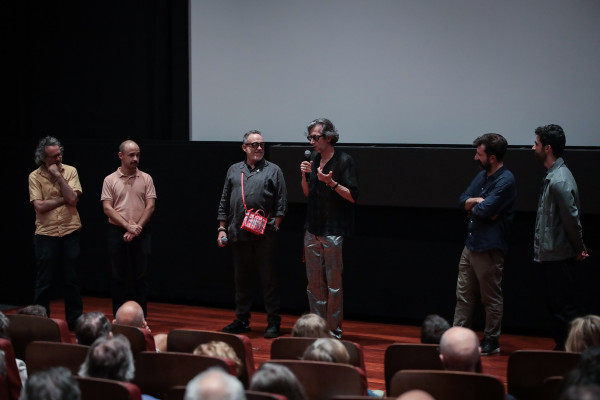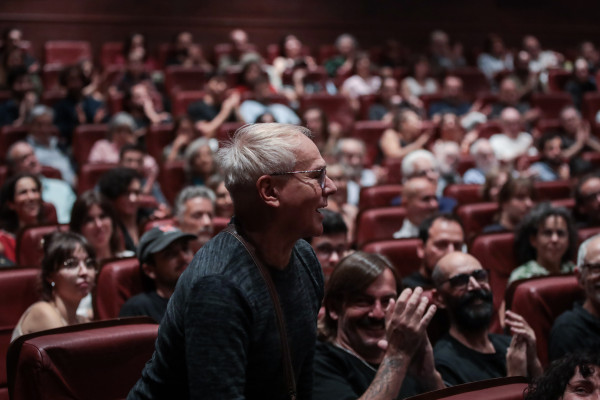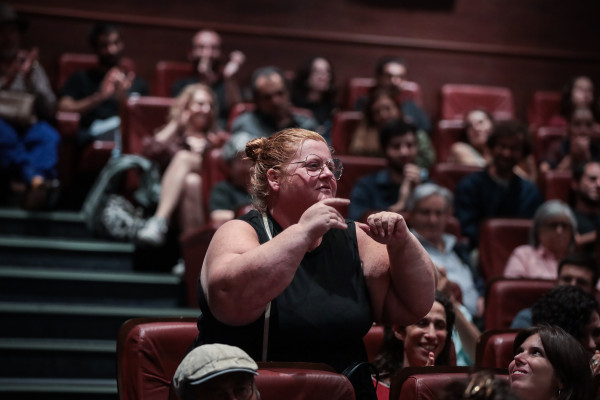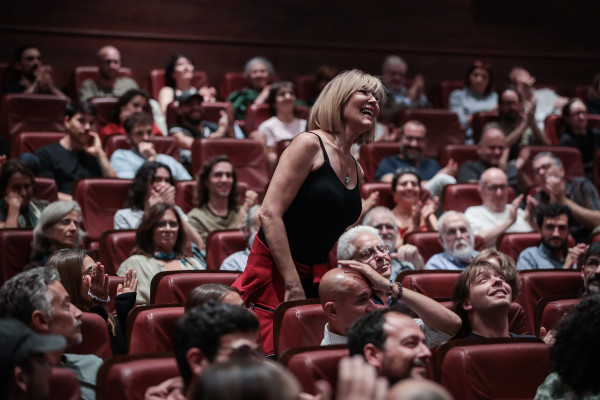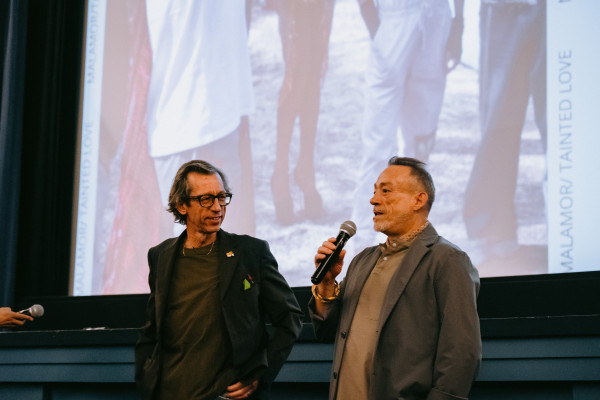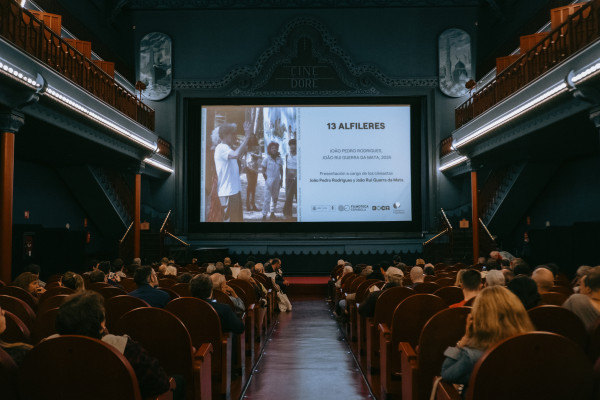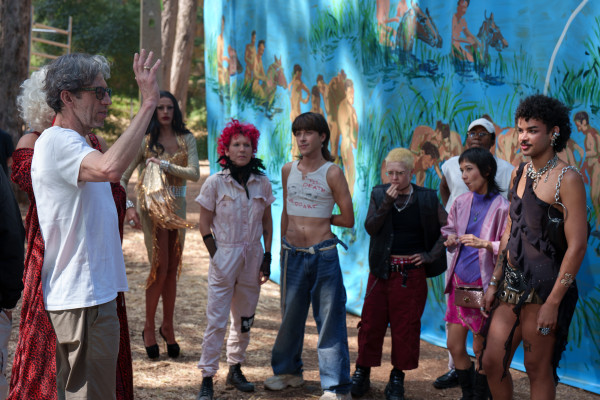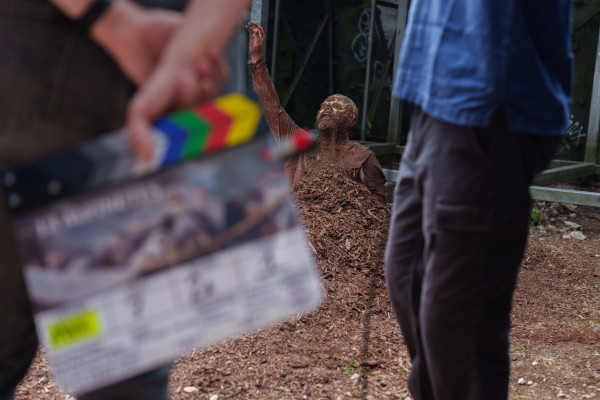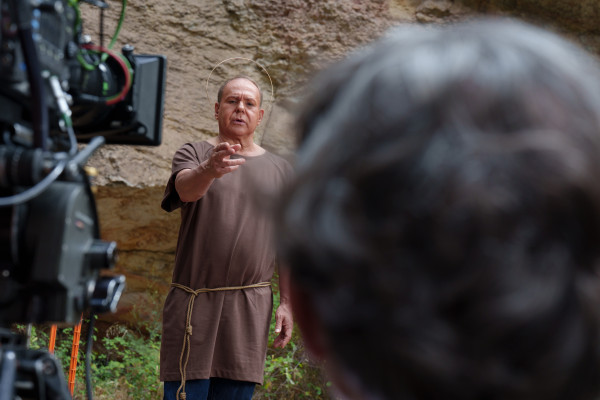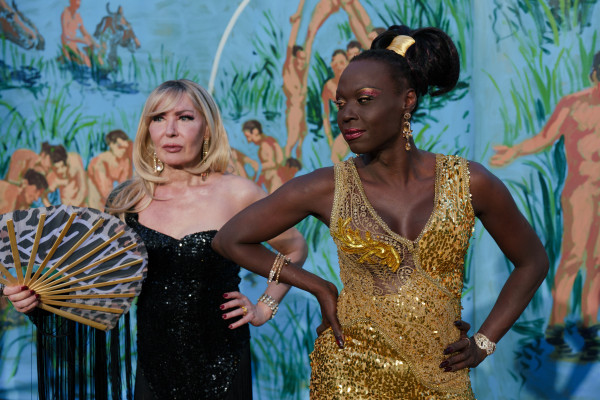Commissioned by BoCA, “13 Alfinetes” is the new film by João Pedro Rodrigues and João Rui Guerra da Mata, a work of fiction that blends devotion, desire and spectres. Drawing inspiration from a miracle attributed to Santo António and filtered through the restless gaze of the two directors, the film draws on this legend to construct a contemporary tale of faith, revenge and disillusionment.
The narrative spans overlapping geographies and timeframes: from medieval Lisbon where everything begins, to an 18th century Madrid reflected in the paintings of Goya, to today’s Lisbon where miracles no longer happen — or perhaps they have only changed form. With an ironic, profoundly sensual gaze, “13 Alfinetes” explores the place of the sacred in a secularised world, enacting the persistence of myths and the drives that feed them.
Shot between Lisbon and Madrid, the film is also a baroque love letter to cinema, where the theatricality of gestures, the exuberance of settings and the tension between visible and concealed produce a ritual, profane ambience. The title harks back to an old madrileña love charm, evoking the intimate and violent dimension of faith as both body and fiction.
“13 Alfinetes” will have an exclusive screening of its working version in the final stretch of the “Malamor /Tainted Love” cycle, marking a new chapter in the collaboration between two of the most irreverent authors in contemporary Portuguese cinema.
Text by João Pedro Rodrigues and João Rui Guerra da Mata
BoCA – Biennial of Contemporary Arts invited us to make a short film for this edition of the biennial, in 2025, which is divided between Lisbon and Madrid. Two neighbouring countries that have finally dared to break down borders and idiosyncrasies. Madrid was the city of João Pedro’s first solo trips as a teenager. Lisbon is the city we have been filming from our centre, the Alvalade neighbourhood, until we managed to escape it, drifts that took us to Trás-os-Montes and, even further, to Macau and Asia, where João Rui spent his formative years. But the mythology of Lisbon, the Portuguese mythology, continues to haunt us. One of the central questions of our work has been how these mythologies live on in us and in our collective present. John Romão, artistic director of BoCA, reminded us of João Pedro’s ‘obsession’ with the Chapel of San Antonio de la Florida, which we had often told him about (John was an actor in the film Morrer Como Um Homem). And we remembered that the last time we visited it, in 2023, when João Pedro’s latest film, Fogo-fátuo, premiered commercially in Spain, it had been restored. Goya’s sombre colours exploded in their full glory.
The myth of Saint Anthony, an unavoidable presence in Portuguese life, has followed us since Morrer Como Um Homem, from 2009, where Tonia, the main character, recited the famous Responso a Santo António to find lost objects, through the short film Manhã de Santo António, from 2012, already a film about
zombies on the morning of 13 June, to The Ornithologist, from 2016, a kind of cheerfully iconoclastic biopic of the saint.
The Madrid tradition, started by seamstresses devoted to Saint Anthony, who on 13 June, the saint’s feast day, would throw 13 pins into the holy water font at the Ermita de la Florida chapel, place their hand over them and, depending on the number of pins that stuck to their palm, they knew how many suitors they would have in the following year. We learned this while researching this Madrid festival with very ancient traditions, equivalent to our City Festivals.
The form of this film mixes experimental horror fiction with a kind of tragicomedy, in the Iberian satirical tradition. We called on partners from previous films – Fernando Santos/Deborah Kristall and Alexander David from Morrer Como Um Homem, Cindy Scrash from A Última Vez Que Vi Macau, Cláudia Jardim from Fogo- Fátuo and others – to finally help us exorcise this figure that haunts us. Just like Goya’s frescoes, which, despite representing a sacred myth, transcend and ‘desecrate’ it, opening it up to the society of his 18th-century Madrid, forgetting any temporal reality (the myth took place in the 13th century) or geographical location (it took place in Lisbon). Because what interests us, we would dare to say that, like Goya, it is like history, made up of myths and contradictions, living within us, running through our veins, as real as can be. And this reality, close to sleight of hand, can only be evoked in and through cinema.
In each new film, we like to set ourselves new challenges, whether thematic or technical. We are obsessed with the idea of not repeating ourselves, of always looking for a path we have not yet travelled or even dreamed of tracing. We discover it by ‘doing’; we know that this is the secret of artistic work. We filmed in IMAX format: Aspect ratio 1.43:1 (today at the Cinemateca, in addition to showing a ‘working version’ because we have not yet managed to finish the film, and although the projected format respects the aspect ratio with which we filmed, the screen and projection are not IMAX). As a film based on Goya’s frescoes in the Ermita de la Florida, paintings that adapt to the forms of the architecture, namely arches, apse and dome, it makes perfect sense to pay homage to them (because it is also a tribute) on a giant concave screen. Cinema has always been closely linked to issues of space and architecture, and in today’s world – with the decline of movie theatres – this spectacularity seems to make even more sense. To combine it with the characters that fill Goya’s frescoes: ambiguous, mysterious, fluid. Even in this, they are modern.
João Pedro Rodrigues + João Rui Guerra da Mata
